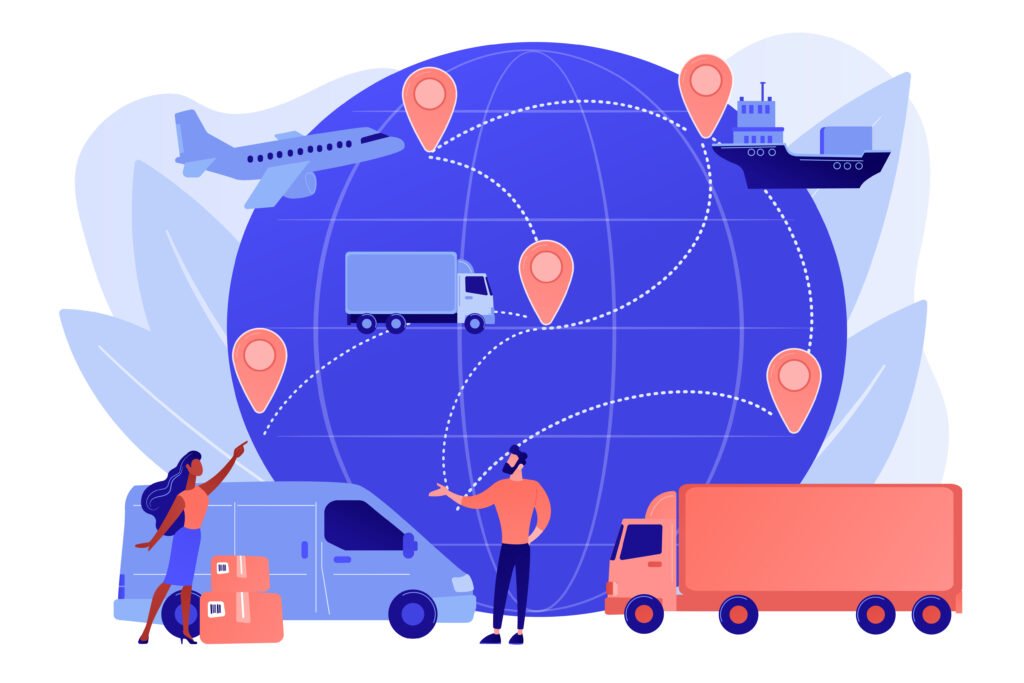With an increasingly competitive scenario, looking for tools that add edge over the competition is extremely important for stabilizing any business. One of the best examples of this is logistics automation, which helps optimize the company’s internal processes.
In addition, this system helps to provide the necessary structure for the company to compete, promoting more benefits. These include logistics process monitoring, cost reduction, process integration and agility.
The ability to provide cost-effective service is vital to stay in the market and outperform the competition. Fortunately, there are many logistics automation technologies that companies can use to reduce costs while improving service quality.
What is logistics automation?
Logistics automation refers to the use of technologies such as logistics machines and software to improve the efficiency of logistics processes from procurement to production, inventory management, distribution, customer service.
On the machine side, think self-guided vehicles, robotic arms, and automated storage and retrieval systems such as carousels and vertical lift modules. And from the logistic software side, many solutions help with sales, WMS ( Warehouse Management System ) , CRM , invoicing, accounting, business intelligence and many others.
As you can guess, logistics automation systems represent a huge growth opportunity for businesses.
Why is logistics automation important?
These days, e-commerce sales are bigger than ever, and the trend shows no signs of slowing down. This ever-increasing flow from around the world puts pressure on manufacturers and distributors alike. To remain competitive, companies need to streamline their processes as much as possible. But they face several challenges related to fulfillment, customer service and systemic bottlenecks. This last challenge is particularly common, especially when it comes to manual data entry.
Bonus: Check out our automate data capture article to learn more.

Manual data entry is a costly waste of time. Employees must review paper or digital documents, then type or copy and merge the data into a spreadsheet or system. This is a slow and repetitive task that escapes the attention of your staff, inevitably leading to errors over time. According to a study by Stitch Labs , 62% of inventory fulfillment issues are caused by human error.
The cost of data entry can add up drastically when you have hundreds if not thousands of documents to process per month. In addition to paying staff, manual data entry can generate other costs in several ways:
• Human error can lead to uninformed business decisions and reputational damage
• Complex documents that require external help take longer to process
• Slower customer service
• Decreased productivity caused by low staff morale
• Sanctions for documentation errors
Logistics companies have struggled with these issues for decades. Fortunately, technology has evolved to a point where logistics automation is now possible.
How can logistics automation help your business scale while saving money?
In addition to reducing costs, logistics automation systems will help you improve the overall efficiency of your supply chain, thus paving the way for expanding your business. Here’s how:
Reduce the cost of manual processes
Logistics automation saves a massive amount of repetitive tasks such as manual picking or data entry. By automation of light processes, time-consuming processes, your teams can focus on more valuable tasks.
Reduce errors and high costs
Investing in the right solutions for your business can drastically reduce human error and prevent the many costs associated with it. Logistics automation saves managers and teams a lot of time and effort, in addition to preventing bottlenecks, which translates into reduced costs and improved productivity. See our article on why every business should adopt automate data capture .
Provide better customer service
Customers are always looking for the cheapest and most reliable options. Automating processes such as transaction tracking, document processing and generation, or updated shipment status can help you provide faster service at a lower cost, making you more competitive against your competition.

You can grow your business
As automation handles repetitive tasks with high accuracy and provides quick access to data, you’ll be freed up to serve more customers and make informed strategic decisions. Small companies (eg a SaaS ) that automate their processes have the potential to compete with larger companies and gain more market share.
With these advantages in mind, you may be wondering how you can start implementing logistics automation systems. Here are 5 systems your business can benefit from.
Most logistics automation systems can be divided into two categories: systems that you can implement immediately and systems that require a consultant to assess your needs and design a customized solution .
The 5 best logistics automation systems you can implement
Data capture software
Document data processing is a vital part of the supply chain. And as we discussed above, manual data entry is a time-consuming process with a high probability of errors. Choose data capture software, a cost-effective alternative that handles data entry for you.

Stock control systems
As the name suggests, an inventory control system handles the various aspects of inventory management, from purchasing to receiving, shipping, tracking, referral, etc. It provides a 24/7 overview of stored goods or materials, along with receiving and shipping notifications.
Predictive analytics
47% of logistics professionals are currently investing in predictive analytics. This system combines complex mathematical algorithms, cloud-based servers, and even blockchain to analyze data and produce forecasting models for demand, pricing strategies, optimal inventory levels, and optimal shipping frequency.
While predictive analytics isn’t the easiest to implement, the ROI can be huge. Top logistics firms are already using it to determine underutilized vehicles, anticipate buyer decisions, plan deliveries accordingly, optimize delivery routes and more, saving millions of dollars.
Warehouse robotics
The introduction of robotics has been a real game changer for logistics in recent times. More and more companies are investing in automated forklifts, mobile robots, drones and automated storage and retrieval systems. Automated machines can perform tasks at a constant pace and with high accuracy, reducing the cost of errors and improving employee safety.

Custom logistics software
Logistics software consultants can conceptualize and develop a comprehensive custom solution with features tailored to your company’s specific needs. Common features include order and inventory management, process automation, analytics, finance, business intelligence , data security, and more. These companies also offer ongoing support.
This logistics automation system can be quite expensive and take more time to implement than standard solutions, as a custom solution must be conceptualized, developed and tested before it can be implemented.
We hope this article will shed more light on a complex investment and form a useful perspective on how logistics automation can help you grow your business.





